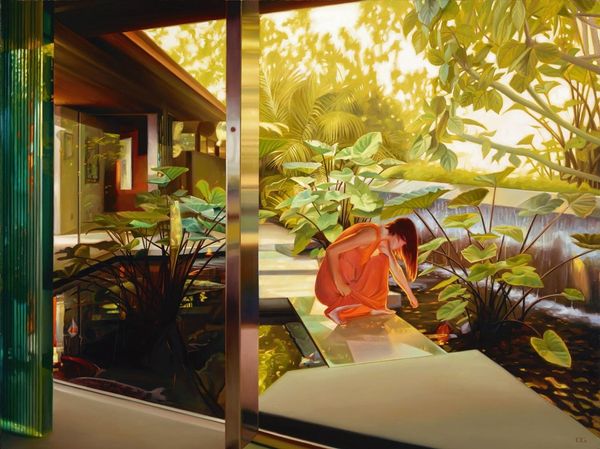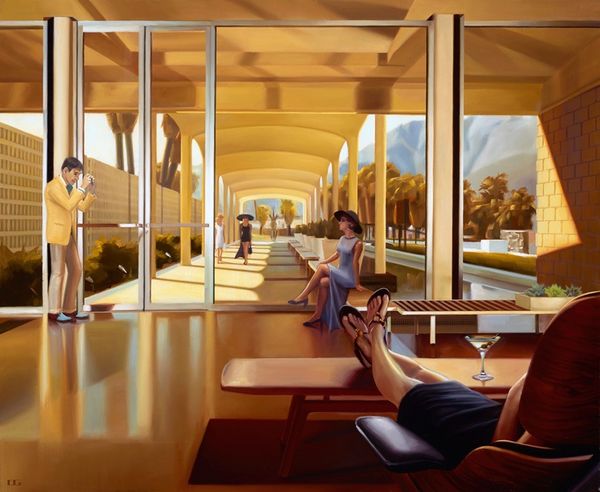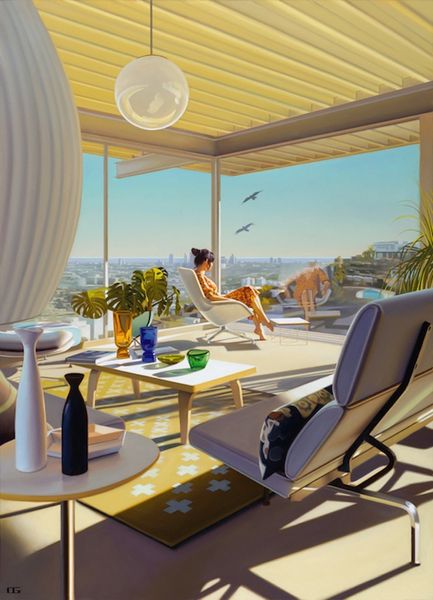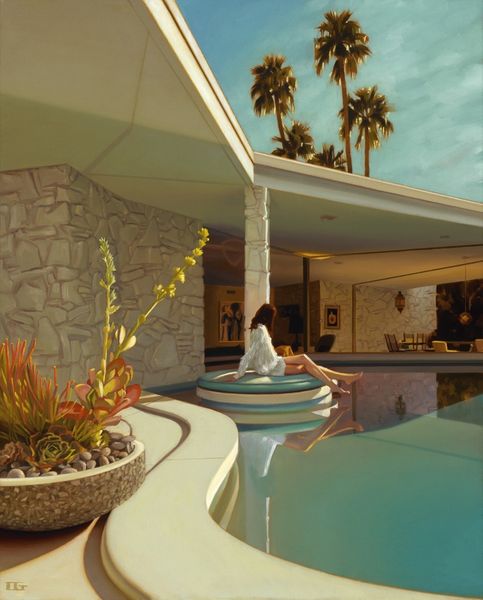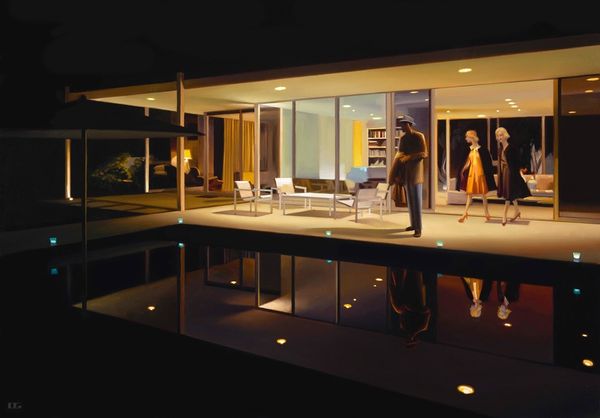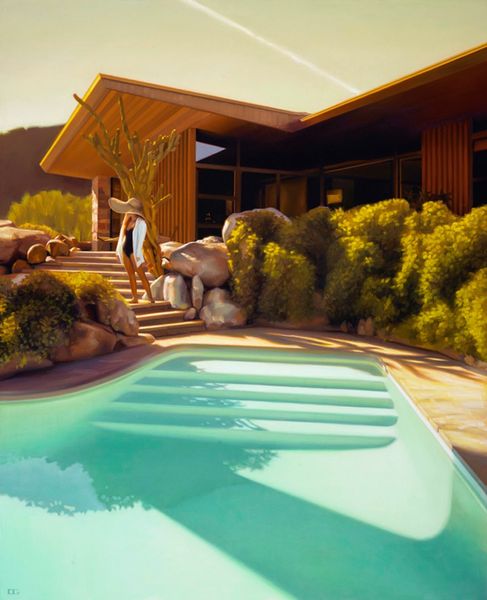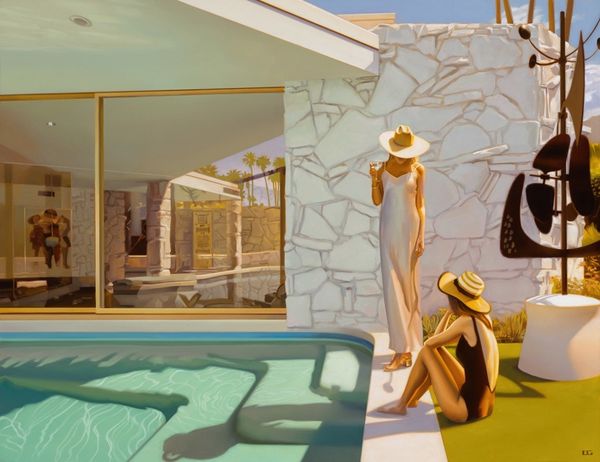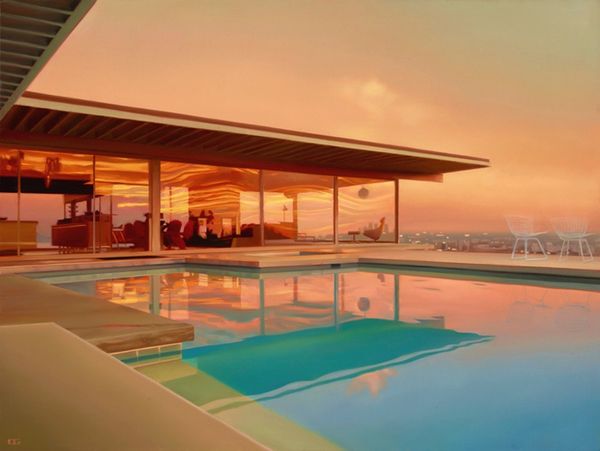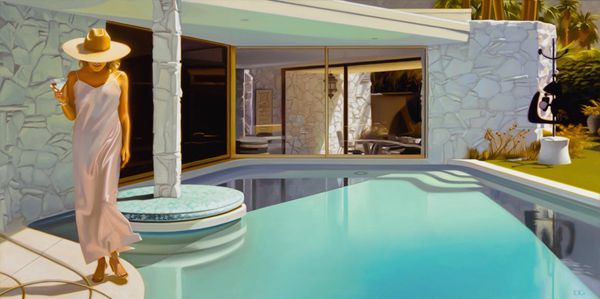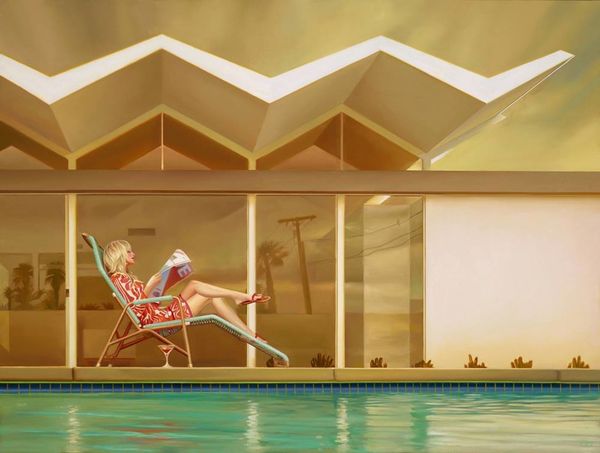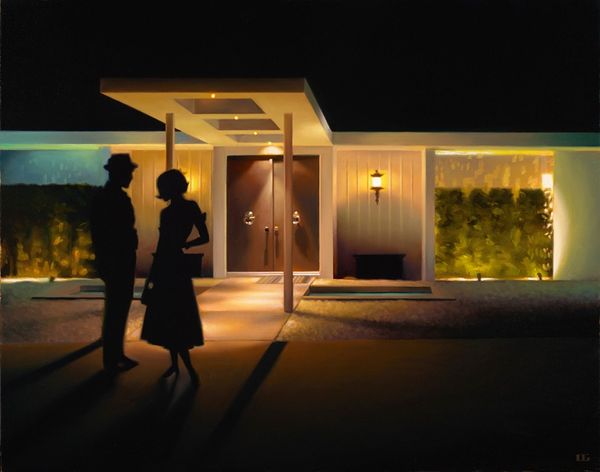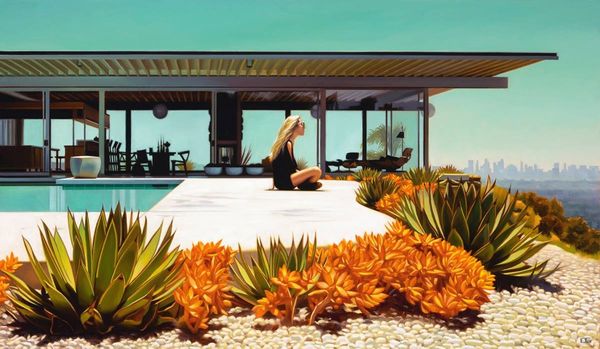
painting, acrylic-paint
#
portrait
#
figurative
#
painting
#
landscape
#
acrylic-paint
#
figuration
#
intimism
#
cityscape
#
genre-painting
#
modernism
#
realism
Copyright: Modern Artists: Artvee
Curator: This acrylic painting is entitled "Happy to be Home." Editor: That light... it feels like a memory, doesn't it? Warm, filtered, and maybe just a little dreamlike. There is this glossy floor, the whole space saturated with it. It evokes a feeling of tranquility. Curator: The artist, Carrie Graber, is playing with a familiar scene of domestic life but infusing it with elements that speak to a specific kind of contemporary privilege, this kind of architecture with walls of windows open to what is certainly the West coast climate, it seems to embrace the narratives around success and the idealized, sometimes-exclusive lifestyle. How does this "home" shape the identity and experience of those within it, and who gets to define that space? Editor: The symbolism here is interesting too. The plants in the foreground create this lush barrier. There’s this woman with a tan holding a bag—likely coming home from a day out, or just leaving. She appears almost as if superimposed; she and the dwelling space communicate something of impermanence in spite of its expensive architecture, something about transience perhaps. The artist seems to offer a vision into the construction of contemporary visual symbols and status. Curator: Right. It's difficult not to notice the absence of clutter. Where does life actually *live* in this image? Who *benefits* from such careful, aesthetically curated environments? How can art, like Graber's work, unveil these layers of lived experience and hidden inequality? Editor: Visually, there’s a clear delineation between inside and outside. It’s an appealing view, and I see how a viewer may connect the house and the "happy home." But in truth there’s a bit of ambiguity, as if there were something more beyond that golden shimmer and designer furniture. The snake plants point almost accusingly. Curator: Precisely. We are not simply looking at a depiction of luxury, but a meditation on the visual languages it employs and the implications they carry. What does this "Happy to be Home" *mean* if those connotations of happiness remain socially inaccessible or unattainable for the majority? Editor: Seeing "home" represented this way makes one wonder how different notions and images, familiar cultural cues and associations, have converged over time to instill or reinforce ideas of belonging. Curator: Right, I am so happy that you picked up on how the image calls us to re-evaluate how physical structures—homes, buildings, urban spaces—contribute to broader questions of identity and social belonging. Editor: Absolutely, seeing how different ideas, like the “happy home,” come together to bolster feelings of association.
Comments
No comments
Be the first to comment and join the conversation on the ultimate creative platform.
